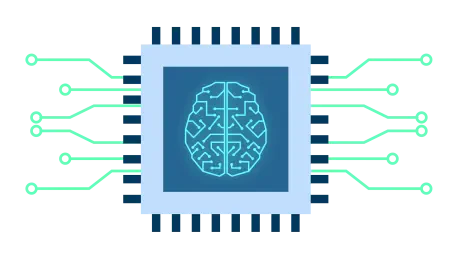In the realm of Edge AI deployment, navigating through the nuances of scaling AI models to function on devices with limited resources requires specialized expertise. Today, we dive into the insights of Vijay Raina, an adept in enterprise SaaS technology and software architecture, who shares his journey through edge AI with models deployed outside the comforts of the cloud.
Can you share your initial experience with edge AI deployment?
My entry into edge AI came with its fair share of lessons learned while optimizing neural networks for resource-constrained devices. My first project involved creating a visual inspection system for a manufacturing client, where the challenge of internet connectivity loss on the factory floor highlighted the necessity of edge computing. This requirement pushed us away from cloud dependencies toward deploying locally to maintain operability without internet access.
What prompted your shift from cloud servers to edge AI for your projects?
The shift stemmed from practical needs—our clients often faced situations where latency and connectivity were crucial. One particular incident involved an AR application, initially cloud-based, with noticeable lag. By shifting models to the edge, not only did we reduce latency drastically, but the tangible reduction in cloud inference costs was also a game changer. Witnessing these direct benefits solidified our decision to move to edge AI.
How has latency improved by deploying models on edge devices?
Latency improvements are one of edge AI’s most compelling benefits. For instance, a project involving augmented reality went from experiencing a 300ms lag in interactions to nearly instantaneous responsiveness once the models were brought onto the edge. This made real-time applications much more viable and user-friendly.
What privacy enhancements have edge AI implementations provided in your projects?
In my experience, edge AI significantly enhances privacy, which proved invaluable in our healthcare projects. Processing sensitive patient data locally allowed us to avoid regulatory challenges associated with cloud-based data processing. This was particularly beneficial for compliance with legislation like HIPAA, ensuring both security and privacy.
How did offline functionality benefit your manufacturing client?
For our manufacturing client, the advantage of offline functionality meant continued operations despite connectivity loss. This redundancy eliminated downtime, which was critical in maintaining production schedules. Other clients, particularly those in remote areas, similarly benefited from improved reliability through offline-capable systems.
What cost savings have you seen from moving to edge deployment?
Cost savings from edge deployment are substantial. A startup I advised managed to reduce their cloud inference costs by a staggering 87%. This example illustrates how edge computing can drastically diminish dependency on cloud resources, translating to significant financial savings.
What has your experience been like with TensorFlow Lite?
TensorFlow Lite was my introduction to mobile deployment. Its three main components—the converter, interpreter, and hardware acceleration APIs—were instrumental. Although the process of compressing models sometimes felt daunting, successful quantization yielded remarkable speed improvements without drastically compromising accuracy, making it a rewarding experience.
Can you describe a challenging project that involved TensorFlow Lite?
One challenging project involved deploying a custom audio processing model. The complexity lay in translating LSTM layers that worked seamlessly in TensorFlow but required near-complete architectural reworks for TensorFlow Lite. Although frustrating, this project underscored the importance of adaptability in edge AI model deployment.
How has ONNX Runtime helped you in multi-platform projects?
ONNX Runtime has been invaluable in multi-platform situations. It has enabled seamless cross-platform deployments through its standardized model format and sophisticated optimization engine. A project needing consistent implementations across Windows, Android, and Linux benefited greatly from its versatility.
What are the limitations or challenges you’ve faced with ONNX Runtime?
Despite its benefits, ONNX Runtime posed challenges with documentation clarity and converting cutting-edge model architectures. The fragmented documentation occasionally necessitated diving into source code for solutions, while some models required creative workaround approaches, making certain deployments more labor-intensive.
What was your initial perception of PyTorch Mobile, and how did it change over time?
Initially, I was skeptical due to early version limitations. However, PyTorch Mobile won me over with its rapid development capabilities, maintaining PyTorch’s dynamic development cycle. Its standout feature is the way it ensures an intuitive deployment experience, enabling quick iterations critical for projects with tight deadlines.
Can you describe a project where PyTorch Mobile was particularly helpful?
During an AR project needing frequent model updates, PyTorch Mobile facilitated quick transitions from development to deployment. The consistency in the framework’s nature allowed for rapid model changes, which would have been cumbersome with alternatives, highlighting its efficacy in agile environments.
How do TensorFlow Lite, ONNX Runtime, and PyTorch Mobile compare in model compatibility?
Compatibility varies considerably among these frameworks. TFLite excels with standard CNN architectures, ONNX Runtime with multi-framework models, and PyTorch Mobile with research-focused structures. Each offers unique benefits that are suited to particular model types.
How do these frameworks compare in terms of performance?
Performance assessments revealed TFLite as superior in minimizing battery consumption and inference time. Benchmarks showed it operating faster with lower memory usage compared to ONNX Runtime and PyTorch Mobile, especially on Android devices, though PyTorch Mobile performed closer to TFLite on iOS due to CoreML integration.
What has been your experience with the developer experience across these frameworks?
Developer experiences vary, with TensorFlow Lite presenting the steepest learning curve but offering better tools. PyTorch Mobile is more accessible for PyTorch users, streamlining rapid prototyping. ONNX, while adaptable across platforms, requires deeper understanding for effective use owing to lesser documentation support.
Can you share any optimization tips?
Optimization must begin with profiling to pinpoint bottlenecks. Thorough quantization tests are essential to avoid unintended biases. Sometimes, model distillation and hybrid executions—balancing edge and cloud processes—yield superior efficiencies. Logging systems and containerizing conversion pipelines are crucial for consistent and replicable deployments.
Do you have any advice for our readers?
When working with edge AI, make understanding device constraints a priority. The choice of framework is secondary to designing projects that respect these limitations from the start. Staying current with developing technologies ensures better adaptability and outcomes in the rapidly evolving edge AI landscape.









